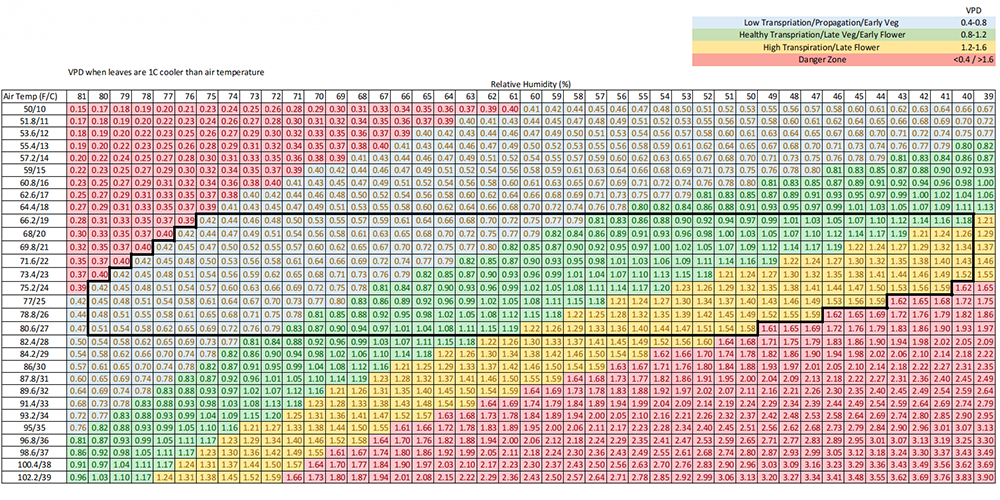It is need to pay attention to the humidity and temperature during the plant growth. Too high or too low humidity and temperature level will hurt the plant. There are some speaking from experience for growers.
Humidity of the grow room
Humidity is the measure of water vapor in the air.
Many growers think this is unavoidable and while this is true to an extent, if humidity goes unregulated the plants could...
Be more likely to get powdery mildew or bud rot (especially on leafy plants or fat buds) if levels are too high.
Suffer from leaf burn/water stress if the levels are too low.
|
Optimal humidity |
|||
|
Clones |
Vegetative |
Flowering |
Final weeks of flowering |
To control humidity: control the environment
To gain better control over the growing environment growers need to isolate their room.
But air circulation is still important.
Sealing off and insulating the growing area is one way to get isolated from the outside environment.
This is important regardless of the outside conditions.
Temperature and humidity
Temperature and humidity are inversely proportional.
When the temperature goes down, the humidity goes up. Vice versa.
This is why swings in temperature impact humidity as well which will relate to potential disease pressure.
The goal is to keep consistency.

Importance of air circulation
Oscillating fans are a good start, but in a room with a dense canopy, floor fans may also need to be added.
The goal is to maintain consistency across all portions of a fully grown plant.
Cover water tanks and check drains
To limit the amount of water that may naturally enter a growing space be sure to cover any water reservoirs you may have.
Also, make sure the drains are actually draining excess water and it is not a large puddle on the floor.
Both may seem obvious, but still worth mentioning.
For additional help: use a dehumidifier
Dehumidifiers remove moisture from the air.
These units may be needed more during the mid to late portions of the growing season because of the increase in plant matter.
Make sure to choose commercial-grade dehumidifiers.
Residential models while cheaper, are electrically inefficient, and cannot hold up under the workload of a grow room.
A proper greenhouse dehumidification system will save money in the long run through proper humidity control and as a result, reduce the potential loss for disease.
Preair is a famous industrial dehumidifier manufacturer that produces a series of dehumidifiers for greenhouse. The following dehumidifiers, ZETA145, ZETA240, ZETA480 are recommended. Welcome your contact.
Where does the humidity come from?
Plants transpire about 97% of the water they absorb.
Growers are suggested to have multiple units to properly regulate humidity.
Multiple units offer more even control over a large grow space and also redundancy so is one unit fails the entire grow space does not fail with it.
To increase humidity
A humidifier can produce a constant flow of water vapor for an indoor garden which may be needed if the natural air is especially dry.
Cool water is used to create a mist that disperses throughout the space and increases moisture levels.
Avoid competing systems
Getting both the temperature and humidity in balance can be a difficult task.
However, knowing the natural conditions of your outside air you may want to adjust light cycles to be during the natural night of the day to reduce the heat of the lights compounding the heat of the day.
Post time: May-16-2023
 +86-13376814803
+86-13376814803  robert@hzhongtai.com
robert@hzhongtai.com 














